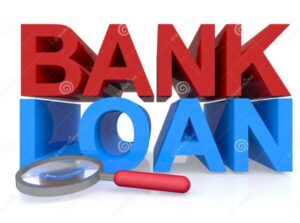How to Secure a Bank Loan-2025
Grasping the Basics of Bank Loans
A bank loan is essentially a financial agreement where a bank lends you a sum of money that you are required to repay with interest over a predetermined period. The loan comes in two primary forms: secured and unsecured. Secured loans are backed by collateral, such as property or other valuable assets, which the bank can claim if you default on your payments. Unsecured loans, on the other hand, do not require any collateral but often come with higher interest rates due to the increased risk for the lender.
Interest rates on bank loans can be either fixed or variable. Fixed interest rates remain constant throughout the life of the loan, providing stability in your monthly payments. Variable interest rates, however, can fluctuate based on market conditions, which means your payments could increase or decrease over time. Understanding the difference between these two types of interest rates is crucial for managing your finances effectively.

Another important aspect to consider is the loan term, which refers to the length of time you have to repay the loan. Loan terms can vary significantly, ranging from a few months to several years. Generally, loans with longer terms have lower monthly payments but may result in paying more interest over the life of the loan. Conversely, shorter-term loans usually have higher monthly payments but can save you money on interest.
It’s also vital to be aware of any additional fees that may be associated with the loan. These can include application fees, processing fees, and prepayment penalties. Application and processing fees are generally charged upfront and can add to the initial cost of the loan. Prepayment penalties are fees charged if you pay off the loan early, which some lenders impose to recoup the lost interest. Always read the terms and conditions carefully to understand all potential costs.
Creditworthiness plays a significant role in the loan approval process. Banks assess your ability to repay the loan by evaluating your credit score, income, and existing debts. A higher credit score generally makes you more attractive to lenders, potentially qualifying you for lower interest rates and better terms. It’s advisable to review your credit report before applying to ensure there are no inaccuracies that could affect your application.
In addition to individual loans, banks offer various types of loans designed for specific needs. These include personal loans, auto loans, home loans, and business loans. Each type of loan has its own set of requirements and benefits, tailored to different financial needs and goals. For example, auto loans are specifically for purchasing vehicles, while home loans are designed for buying or refinancing real estate.
Understanding these basic elements of bank loans will help you make informed decisions and choose the loan that best aligns with your financial objectives.
Getting Ready to Apply
Preparing to apply for a bank loan involves several key steps that can enhance your chances of approval. First, gather all necessary documents. These typically include proof of income, such as pay stubs or employment letters, tax returns for the past two to three years, recent bank statements, and government-issued identification. Having these documents ready will streamline the application process and show the lender that you are organized and serious about obtaining the loan.
Next, check your credit score. Your credit score significantly influences the approval process and the interest rates you may qualify for. You can obtain a copy of your credit report from major credit bureaus to review your score and identify any discrepancies. If you find any errors, take steps to correct them immediately, as inaccuracies can negatively affect your application.
In addition to reviewing your credit report, work on improving your credit score if necessary. Pay down outstanding debts, avoid taking on new debt, and ensure all your bills are paid on time. A higher credit score not only improves your chances of getting approved but also qualifies you for more favorable loan terms.
It’s also wise to assess your current financial situation. Create a detailed budget to understand your monthly income and expenses. This will help you determine how much you can afford to borrow and repay comfortably. Knowing your financial limits is crucial for selecting the appropriate loan amount and term.
Consider seeking pre-approval from multiple lenders. Pre-approval gives you an estimate of the loan amount and interest rate you may qualify for, without affecting your credit score. This step can help you compare offers and choose the most favorable terms. Pre-approval also shows sellers and real estate agents that you are a serious buyer if you’re applying for a mortgage.
Another important aspect is understanding the different types of loans available. Whether you need a personal loan, auto loan, home loan, or business loan, each type has its own set of requirements and benefits. Researching these options beforehand can help you choose the loan that best fits your needs and financial goals.
Finally, prepare a strong application by writing a clear and concise loan proposal if required. This is particularly important for business loans, where you may need to provide a detailed business plan, financial statements, and projections. A well-prepared loan proposal can significantly improve your chances of securing the loan.
Selecting the Appropriate Loan
Choosing the right loan involves more than just looking at interest rates. You need to take into account the fees, terms, and overall conditions attached to the loan. Different lenders offer various packages, so it’s essential to do your homework. Start by comparing interest rates and terms from multiple banks. While a lower interest rate is appealing, other factors like origination fees, monthly service charges, and repayment terms can impact the total cost of the loan.
Next, consider the type of loan that best suits your needs. For instance, if you’re purchasing a car, an auto loan would be more appropriate than a personal loan because it typically comes with better rates and terms. If you’re buying a home, a mortgage tailored to your financial situation will be necessary. Business loans have their own set of requirements and are designed to help with operational costs or expansion efforts.
Assess your repayment capacity by looking closely at your monthly budget. Calculate how much you can comfortably allocate towards loan payments each month. This will help you avoid overextending yourself financially. Make sure the loan terms align with your income and expenditure patterns to minimize stress and ensure timely repayments.
Be cautious about variable interest rates, which can change over time. While they might start low, they can increase and lead to higher monthly payments. Fixed interest rates provide stability and predictability, which can be advantageous for long-term financial planning. Understanding these differences will help you make an informed decision.
Additionally, check if there are any penalties for early repayment. Some loans come with prepayment penalties that can add to your costs if you decide to pay off the loan ahead of schedule. Understanding all potential fees and penalties will give you a clearer picture of the loan’s total cost.
Consult with a financial advisor if you find the options overwhelming. Professional advice can help you navigate the complexities of different loan products and choose the one that best aligns with your financial goals. Financial advisors can also help you understand the fine print and ensure you’re not missing any critical details that could affect your financial well-being.
Finally, use loan calculators available online to estimate your monthly payments and the total interest you’ll pay over the life of the loan. These tools can help you visualize the financial commitment you’re about to undertake and ensure it fits within your long-term financial plans.
Sending in the Application
After you’ve chosen the loan that best suits your needs, it’s time to focus on completing the application. Ensure that you have gathered all the necessary documents that you might need for submission. Double-check that your proof of income, tax returns, bank statements, and identification are up to date and accurate. These documents are crucial for the bank to evaluate your financial situation comprehensively.
When filling out the application, accuracy is key. Any errors or omissions can delay the processing time and potentially impact your chances of approval. Carefully review each section of the form and provide detailed information where required. Most banks allow you to apply either online or in person, so choose the method that is most convenient for you. Online applications can be more efficient, allowing you to upload documents and receive updates electronically. However, applying in person can offer you the opportunity to ask questions and get immediate clarifications from the bank’s representatives.
In addition to the standard documentation, some loans may require additional paperwork. For example, if you’re applying for a business loan, you might need to include a detailed business plan, financial statements, and projections. Make sure you understand all the requirements specific to the type of loan you’re seeking and prepare these documents in advance.
Before you submit the application, it’s wise to review all the information one last time. Look for any inconsistencies or missing information that could cause issues. Confirm that all the required documents are attached and correctly labeled. Some banks provide a checklist that can help ensure you haven’t overlooked any critical details.
Once you’re confident that everything is in order, submit the application along with all necessary documents. Keep copies of everything you submit for your records. If you’re applying online, ensure you receive a confirmation email or receipt that your application has been received. If applying in person, ask for a copy of your application and any supporting documents.
It’s also a good idea to stay in contact with the bank throughout the application process. Follow up with the loan officer to check the status of your application and provide any additional information they might request. Being proactive can demonstrate your commitment and potentially speed up the approval process.
Waiting for Approval
Once you’ve submitted your loan application, it’s crucial to understand the next steps while you wait for approval. The bank will meticulously evaluate your application to determine your creditworthiness and the risk associated with lending to you. This involves scrutinizing your credit history, income, and debt-to-income ratio, among other factors.
During this period, it’s vital to keep your financial profile stable. Avoid making large purchases, opening new credit accounts, or incurring additional debt. These actions could alter your credit score or financial situation, potentially affecting the bank’s decision. Maintaining a steady financial status will demonstrate to the lender that you are a reliable borrower.
Communication with the bank is also key. Stay available and responsive to any requests for additional documentation or clarifications. Promptly providing any needed information can help expedite the review process. Sometimes, the bank may need further details about specific items on your credit report or additional proof of income, so being prepared to supply these promptly can be beneficial.

It’s also helpful to set realistic expectations regarding the timeline. While some loans, especially unsecured personal loans, might be processed quickly, others, like mortgages or business loans, can take longer due to their complexity. Patience is crucial, but so is proactive follow-up. Periodically check in with your loan officer to get updates on your application’s status and ensure everything is progressing smoothly.
Understanding the possibility of additional steps is also important. For example, in mortgage applications, the bank might require an appraisal of the property you’re looking to buy. Similarly, business loans might necessitate site visits or interviews. Being aware of these potential steps can help you prepare in advance and avoid any surprises.
Finally, while waiting, it’s wise to continue researching and preparing for potential outcomes. If you’re approved, be ready to review and sign the loan agreement promptly, ensuring you understand all the terms and conditions. If your application is denied, ask the bank for feedback on why it was rejected and what steps you can take to improve your chances in the future. This information can be invaluable for your next application attempt.



